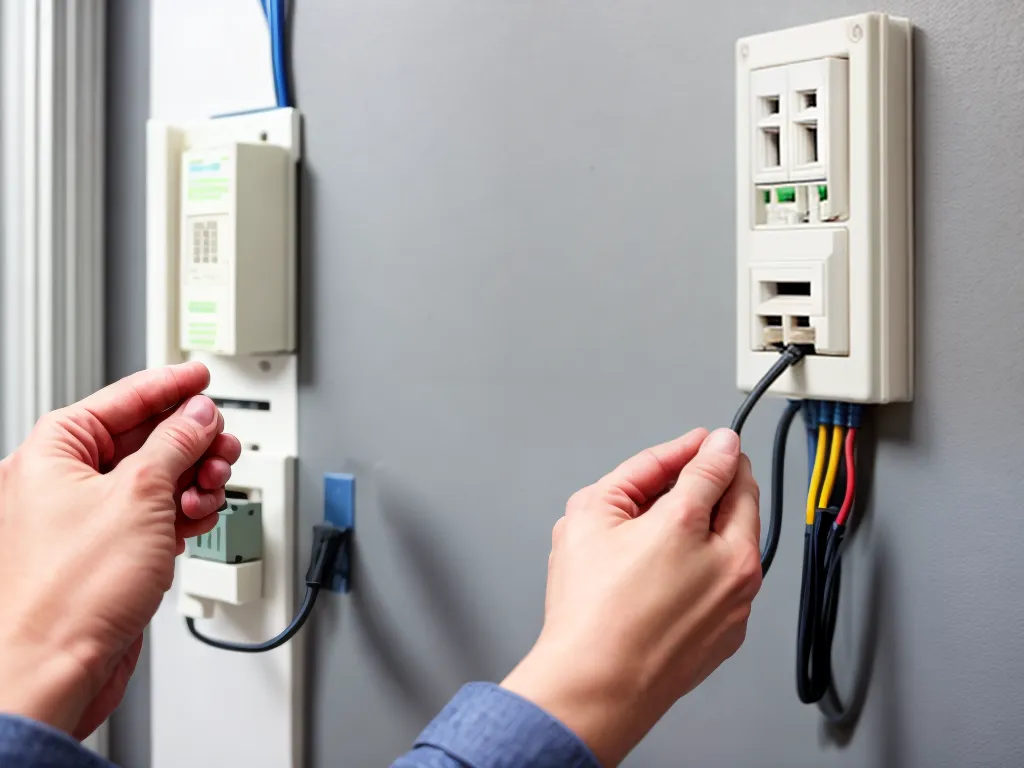
Introduction
The National Electrical Code (NEC) includes important updates every 3 years that electricians must follow to ensure safety and efficiency. As an electrician working on residential buildings, it's crucial to understand the latest NEC rules and how to apply them properly. Although some of the updates may require adjusting your wiring methods, in most cases you can get around the new rules with some strategic planning and preparation. In this comprehensive guide, I'll walk you through the key NEC changes impacting residential electricians and provide tips to make compliance smooth and cost-effective.
Keep Up with Required AFCI and GFCI Protection
One major area of change in the updated NEC rules relates to arc-fault circuit interrupter (AFCI) and ground-fault circuit interrupter (GFCI) devices. The latest NEC expands the circuits that require AFCI and GFCI protection.
Here are some key tips to address these changes:
-
Carefully review the code to understand new AFCI requirements for lighting circuits and branch circuits. For example, all 120-volt, single-phase, 15- and 20-ampere branch circuits supplying outlets installed in dwelling unit family rooms, dining rooms, living rooms, parlors, libraries, dens, bedrooms, sunrooms, recreation rooms, closets, hallways, laundry areas and similar rooms must now have AFCI protection.
-
Plan ahead to swap out existing circuit breakers for combination-type AFCI circuit breakers. This is often the most cost-effective approach compared to adding AFCI receptacles.
-
Verify that circuits meet new GFCI requirements for kitchen dishwasher branch circuits, laundry areas, garages, and basements. Add GFCI breakers or receptacles as needed.
-
Consider installing GFCI or AFCI breakers for the entire panel - this simplifies protection and allows easy resetting.
Adjust to New Lighting Load Requirements
The updated NEC includes revised lighting load calculations that impact residential wiring. Here are some strategies to address these lighting changes:
-
Review the new lighting load requirements of 3 VA per square foot for most dwelling rooms.
-
For LED lighting, calculate actual VA ratings instead of using the 3 VA per square foot standard - this is usually more favorable.
-
Note new specifics for lighting loads in kitchens (5 VA per square foot), garages (3 VA per square foot), and closets (6 VA).
-
Carefully document lighting load calculations during planning and electrical plans submittal to get lighting circuits approved.
-
For existing circuits, measure actual lighting wattages to repurpose or share circuits as needed to meet code.
Adjust Branch Circuit Load Calculations
In addition to lighting changes, there are updated NEC branch circuit load calculation requirements to address:
-
Revise load calculations for general-use receptacle circuits from 180 VA to 200 VA per outlet.
-
similarly, change calculations for laundry circuit receptacles from 1500 VA to 1800 VA.
-
Recognize lower continuous load requirements for some circuits which may allow you to share circuits.
-
Leverage new NEC guidance for calculating continuous loads based on actual connected devices.
-
Thoroughly document load calculations for existing and new circuits to demonstrate NEC compliance.
Take Advantage of New Receptacle Placement Options
The updated NEC provides more flexibility for receptacle placement in some areas. Take advantage of these changes to simplify your wiring:
-
Note that receptacles are no longer required in halls or stairways in one- and two-family dwellings.
-
Make use of new exceptions for receptacle requirements in basement storage areas, garages, and laundry areas.
-
Review revised rules for receptacle placement in relation to countertops - take advantage of new options for receptacle placement behind appliances.
-
Refer to updated NEC guidelines for receptacle requirements related to island and peninsula countertop space.
Summary
The latest NEC rules for residential wiring aim to improve safety and efficiency, but can require updating wiring methods. By thoroughly learning the new code requirements, taking advantage of flexible options, planning ahead, and carefully documenting your compliance, you can smoothly transition to the updated standards. Familiarize yourself with all changes impacting your residential electrical work and don't hesitate to consult local permitting authorities if you have any questions. With the strategies outlined here, you can save time, avoid issues, and demonstrate full compliance with the new NEC residential wiring rules.